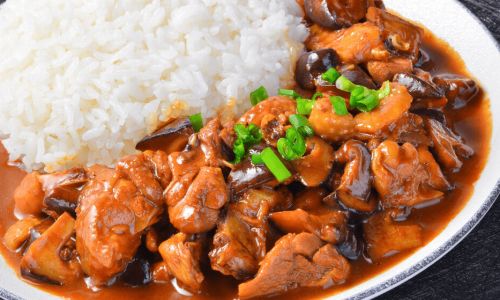Introduction
Cooking a chicken stew that is not only tender but also flavorful and falls apart at the mere touch of a fork is an art form that every home chef should aspire to master. There’s nothing quite like the comforting aroma of a slow-cooked chicken stew filling your kitchen, promising a hearty and nourishing meal that brings family and friends together. While the process may seem straightforward, achieving perfection requires attention to detail, the right ingredients, and patience. This comprehensive guide will walk you through every step, ensuring your chicken stew is a culinary triumph.
Section 1: Choosing the Right Chicken
The foundation of any great chicken stew lies in the quality of the chicken you choose. Here are some key considerations:

1 Type of Chicken
-
Whole Chicken or Chicken Pieces? For stewing, it’s best to use chicken pieces, preferably thighs, legs, or breasts with the bone-in and skin-on. Dark meat (thighs and legs) tends to be more flavorful and tender when cooked for extended periods, but breasts can work well if cooked correctly.
-
Organic vs. Conventional Opting for organic chicken ensures that your stew is free from antibiotics, hormones, and other potentially harmful additives. The flavor can also be superior due to the chickens’ healthier diets.
2 Preparation
-
Trimming Fat: While some fat is essential for flavor, excess can make your stew greasy. Trim any visible fat, especially from the skin, but leave enough to keep the meat moist during cooking.
-
Seasoning: Season your chicken pieces generously with salt and pepper. This not only enhances flavor but also helps draw out moisture, ensuring even cooking.
Section 2: Selecting and Preparing Ingredients
A well-rounded chicken stew is a harmonious blend of flavors, and the right ingredients are crucial.
1 Aromatics
-
Onions, Garlic, and Carrots: These form the base of your stew. Finely chop onions and garlic for a stronger flavor release, and slice carrots into thick rounds to withstand long cooking times.
-
Celery: Adds a subtle crunch and earthy flavor. Dice it finely or use celery stalks whole for added texture.
2 Tomatoes and Broth
-
Canned Tomatoes: Use whole peeled tomatoes or diced tomatoes with their juice. They add acidity, sweetness, and depth of flavor.

-
Chicken Broth: High-quality chicken broth is essential. Homemade is best, but low-sodium store-bought options work well too. Avoid broth with artificial flavors or colors.
3 Herbs and Spices
-
Fresh Herbs: Thyme, rosemary, and parsley are staples. Tie them in a bundle with kitchen twine for easy removal later, or chop and scatter them throughout the stew.
-
Dried Herbs and Spices: Bay leaves, paprika, and a pinch of dried oregano or basil can elevate your stew’s flavor profile.
4 Optional Ingredients
-
Potatoes, Peas, or Corn: These can be added towards the end of cooking for a hearty, one-pot meal.
-
Wine or Beer: A splash of white wine or a light beer can add complexity to your stew. Use a good quality one you’d enjoy drinking.
Section 3: The Cooking Process
Now that you have your ingredients prepared, let’s dive into the cooking process.
1 Sautéing the Aromatics
-
Heat Oil: Start by heating a large, heavy-bottomed pot or Dutch oven over medium heat. Add a tablespoon or two of olive oil or butter.
-
Cook Aromatics: Add your chopped onions, garlic, carrots, and celery. Sauté until the vegetables are softened and the onions are translucent, about 5-7 minutes. This step is crucial for building a flavorful base.
2 Browning the Chicken

-
Increase Heat: Once the vegetables are ready, increase the heat to medium-high.
-
Sear Chicken: Add the seasoned chicken pieces to the pot, skin-side down if using skin-on chicken. Sear until the skin is golden brown and crispy, about 3-4 minutes per side. This locks in juices and adds another layer of flavor.
3 Adding Liquid and Simmering
-
Deglaze the Pot: Once the chicken is browned, pour in your tomatoes with their juice and deglaze the pot by scraping up any browned bits stuck to the bottom. This adds caramelized flavors to your stew.
-
Chicken Broth: Pour in enough chicken broth to cover the chicken pieces by about an inch. Add your herbs and spices.
-
Bring to a Simmer: Bring the mixture to a gentle simmer. If using wine or beer, add it now.
4 Slow Cooking
-
Cover and Reduce Heat: Lower the heat to maintain a gentle simmer. Cover the pot with a lid, leaving it slightly ajar to allow some steam to escape, which prevents the stew from becoming too watery.
-
Cooking Time: For tender, fall-apart chicken, cook for at least 1.5 to 2 hours, or until the meat is easily pulled apart with a fork. Dark meat may take slightly longer than breasts.
5 Finishing Touches
-
Check Seasoning: Taste the stew and adjust the seasoning with salt and pepper as needed.
-
Add Vegetables: If using potatoes, peas, or corn, add them in the last 30 minutes of cooking. They should be tender but not overcooked.
-
Thickening (Optional): If your stew is too thin, you can thicken it by mixing a tablespoon of cornstarch with a bit of cold water and stirring it into the stew. Let it simmer for another 5 minutes.

6 Serving
- Garnish: Serve your stew hot, garnished with freshly chopped parsley or a dollop of sour cream. Accompany it with crusty bread or a side of mashed potatoes for a comforting meal.
Section 4: Tips for Perfect Chicken Stew
Here are some additional tips to ensure your chicken stew is a success:
1 Patience is Key
- Slow cooking is essential for tender, flavorful chicken. Rushing the process will result in tough meat and a bland stew.
2 Don’t Overcrowd the Pot
- Ensure your chicken pieces have enough space to cook evenly. Overcrowding will reduce the temperature of the stew and prevent proper browning.
3 Use a Heavy-Bottomed Pot
- A good-quality pot distributes heat evenly, preventing hot spots that can burn your stew.
4 Taste and Adjust
- Seasoning should be done in layers, and it’s important to taste the stew throughout the cooking process to adjust accordingly.
5 Experiment with Flavors
- Don’t be afraid to add your own twists, like a splash of vinegar for brightness or a handful of dried mushrooms for earthiness.
Conclusion
Mastering the art of cooking tender, flavorful, and fall-apart chicken stew is a rewarding culinary endeavor. By paying attention to ingredient selection, meticulously preparing each component, and understanding the importance of slow cooking, you can create a dish that is not only nutritious but also deeply satisfying. Remember, the beauty of stew lies in its simplicity and adaptability. Feel free to experiment with different herbs, spices, and vegetables to suit your taste preferences. With practice and patience, you’ll soon be crafting chicken stews that are the envy of your friends and family. Happy cooking!





0 comments